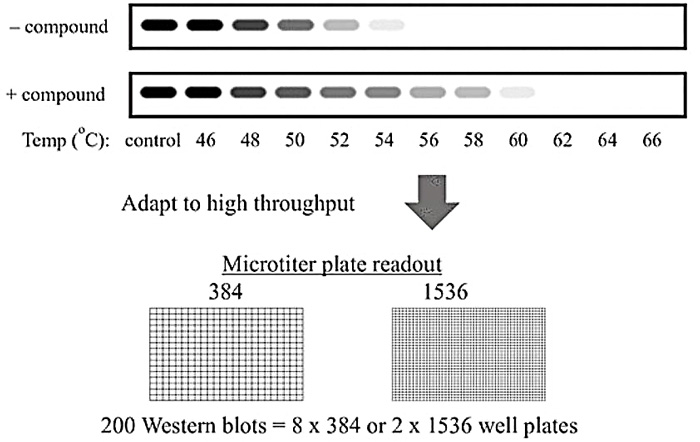- Computer-Aided Drug Design (CADD)
- Fragment-Based Screening
- High Content Screening (HCS)
-
High Throughput Screening (HTS)
- Automated HTS Platform
- Biochemical assays in Hit Characterization
-
Biophysical Assays in Hit Characterization
- BLI for Affinity-based Hit Screening
- CD Spectrometry for Protein Structure Determination
- ITC for Binding Assessment
- MS for Structure Confirmation
- MT for Binding Affinity Measurement
- NMR Spectrometry for Tareget identification and Characterization
- SPR Spectrometrys for Structure Determination
- TSA for Protein's Stability Evaluation
- Cellular assays in Hit Characterization
- Drug Repurposing
- Hit Screening
- HTS Assay Development
- HTS Compounds Libraries
- HTS Data Management
- Virtual Screening (VS)

One-stop
Drug Discovery Services
- Experienced and qualified scientists functioning as project managers or study director
- Independent quality unit assuring regulatory compliance
- Methods validated per ICH GLP/GMP guidelines
- Rigorous sample tracking and handling procedures to prevent mistakes
- Controlled laboratory environment to prevent a whole new level of success
TSA for Protein's Stability Evaluation
INQUIRY
Fig.1 The application of higher-throughput plate-based methods in thermal shift increases assay throughput. (Mark, J.; et al. 2019)
How Thermal Shift Assay (TSA) Works?
TSA is a useful method to evaluate the thermal stability of proteins by slowly heating the samples in a fluorescence quantitative PCR instrument, and the assay is carried out by detecting the amount of fluorescent dye combined with proteins whose structure and/or dynamics changes during the heating process. Thermal shift assay utilizes the biochemical phenomenon in which ligand binding enables to increase the target protein's heat stability, providing information for scientists to gain insight in the compound-target interaction.
Advantages of TSA
The thermal shift method has several significant advantages over other conventional sensitive assays, for example:
- Thermal shift assay requires much less protein than methods such as circular dichroism and differential scanning calorimetry.
- It can perform rapid scanning (about 30 minutes for each measurement) which can be offered as a good choice for high throughput screening.
- This technique is allowed to be performed on a quantitative PCR system with low reaction volumes and low protein concentrations.
Application of TSA
Thermal shift assay can be applied in the following three aspects:
- Optimize buffer conditions for protein storage and maintain its thermal stability.
- Investigate what kind of and how mutations can affect protein’s stability.
- Conduct a series of screening campaigns rapidly to determine small molecule drug candidates and other ligands for protein binding.
Our Services of TSA
- We perform identification of ligand-protein binding and analysis of thermal stability of proteins through TSA-based high throughput screening.
- Our scientists optimize the buffer formulations (like pH, salts, detergents and other additives) and co-factors to promote protein stability and the effect of mutations or modifications on the thermal stability of proteins.
- We apply differential scanning fluorimetry or differential static light scattering method to screen thousands of compounds per day with minimal assay establishment.
- Main reader domain proteins including bromodomains, chromodomains and other methyl-readers are provided by our thermal shift approaches. In addition, we also offer custom-tailored assay development for other target categories.
- At BOC Sciences, our team has expertise in studying the target engagement of drug candidates with the application of thermal shift assay. We offer the rank order of ligand binding and the binding energy, which are obtained and estimated by comparing the Tm values of the apoprotein and protein-ligand complexes. We also assist in quantifying and analyzing the extent to which a drug candidate binds to a protein target of our interest.
- We also apply this unique technique in the fragment-based screening by selecting fragments which represent different binding categories from a primary screening with the help of thermal shift assay.
Our Advantages of TSA
- At BOC Sciences, we have established a built-in algorithms for melting temperature and allowed to view overlaid melting curves across different assay condition, helping to compare outcomes of different methods.
- Characterization of thousands of compounds in a only a few hours can be achieved due to our capacities of large-scale screening.
- We can help our customers improve the success rate of protein purification and crystallization, and reduce the cost in drug development by our cost-effective and high-throughput screening methods.
Equipments
BOC Sciences has already equipped Protein Thermal Shift Software & Reagents with Real-Time PCR Analysis Software which is capable of high-throughput TSA study:
Thermo Fisher Protein Thermal Shift™
Reference
- Mark, J.; et al. High-Throughput Cellular Thermal Shift Assays in Research and Drug Discovery. LAS DISCOVERY: Advancing the Science of Drug Discovery. 2019, 25(2): 137-147.
※ It should be noted that our service is only used for research.
Online Inquiry

